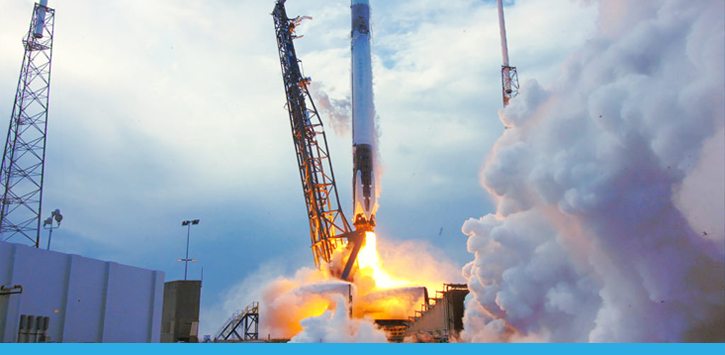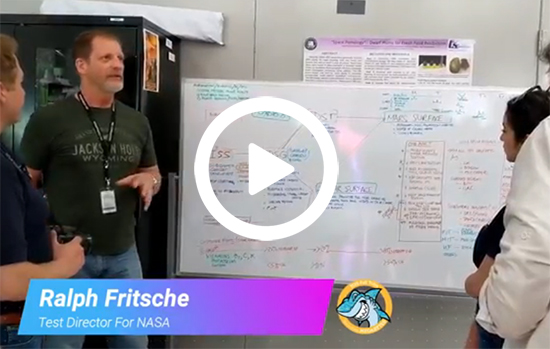FLVS Follows Science on Its Way to Space

On April 2, 2018, the SpaceX Falcon 9 rocket blasted into space with the Dragon spacecraft – sending fascinating science experiments and supplies to the International Space Station.
FLVS was invited to share the experience with our students and followers through social media, including a behind-the-scenes tour of NASA facilities at Kennedy Space Center prior to launch.
Throughout the day, we had the opportunity to speak with representatives from NASA and SpaceX and share live updates. Our students joined us virtually to watch the rocket launch live and tag along on our tour, including visits to:
- Pad 40, where the SpaceX Falcon 9 rocket and Dragon were set to launch
- Pad 39B, where the NASA Space Launch System is to launch missions to the moon and beyond
- The Vehicle Assembly Building (VAB)
- The International Space Station Processing Facility
- Our NASA Causeway launch viewing site (only a few miles away!)
This was the 14th commercial resupply service mission to the space station (also known as CRS-14).
In a feature from the Mega News Network, our FLVS Full Time high school student news show, our students shared footage from the day:
FLVS students were able to learn more about the science heading to space, including experiments using bioluminescent human cells. We heard from Dr. Dan Close, Chief Science Officer of 490 BioTech, about the cells and how they use glowing genes – like those of fireflies – to light them up and evaluate their health.
Other speakers included:
- Robert Lightfoot, Jr., Acting NASA Administrator
- Ralph Fritsche, NASA Sr. Project Manager for Long Duration Food Production
- Ye Zhang, NASA Project Scientist and Research Chemist
Our students also had the chance to ask questions about some of the experiments. One popular topic was that of growing plants and food in space. Our Flex Elementary Kindergarten students wanted to know:
How are plants able to grow on the Space Station without sunlight?
We wondered that too! It turns out that plastic greenhouses currently on the Space Station use special lights to help plants grow. These include red, blue and green LED lamps. Check out the Mega News Network video above to see examples!
Another great question from one of our high school students:
What would growing food in space change for the future of space expeditions? Is it probable that there could even be gardens on other planets one day?
Yes, scientists think it is possible that we may grow plants on another planet one day! A few varieties of leafy greens have already been grown on the space station, but researchers are testing other plants and want to better understand how microbial life affects food grown in space. The next step will be to grow plants in deep space on missions to the moon. By understanding how plants respond to the different conditions of space, scientists hope to be able to grow food that could be used for long-duration human missions, like a future mission to Mars.
One last question related to the Atmosphere-Space Interactions Monitor (ASIM), a project studying the upper atmosphere:
Would the new storm technology that is being sent to space help us determine when high-impact storms are coming to earth farther in advance than what we know today?
Yes! In addition to studying intriguing terrestrial gamma-ray flashes in Earth’s atmosphere (Google it!), this project will also provide data about dust storms and pollutants. This data will improve our understanding of hurricane intensification and help us create better climate and meteorological predictions.
Want to learn more about the science that arrived at the space station this month? Check out this video to hear from Ken Shields, Director of Operations for the Center for the Advancement of Science in Space (CASIS):
If you weren’t able to follow us during the event, you can still view photos from the story saved on our Instagram profile! Check out @floridavirtualschool to view and tag along for future events.
References:
CRS-14 Dragon Arrives at Space Station with Science Bonanza
NASA Veggie PONDS Experiment
NASA Atmosphere-Space Interactions Monitor
Cover photo credit: NASA

